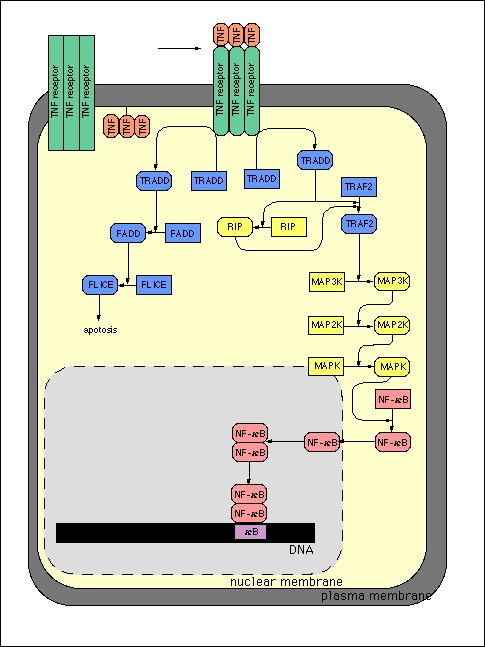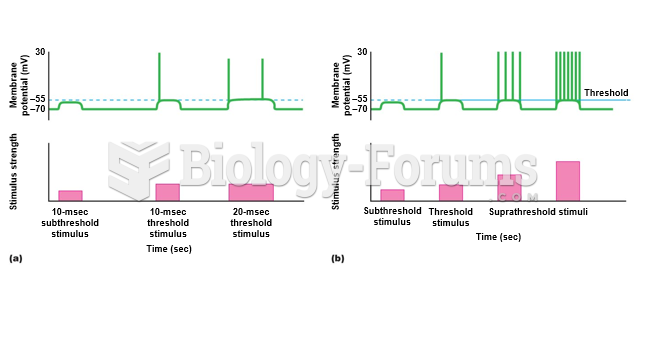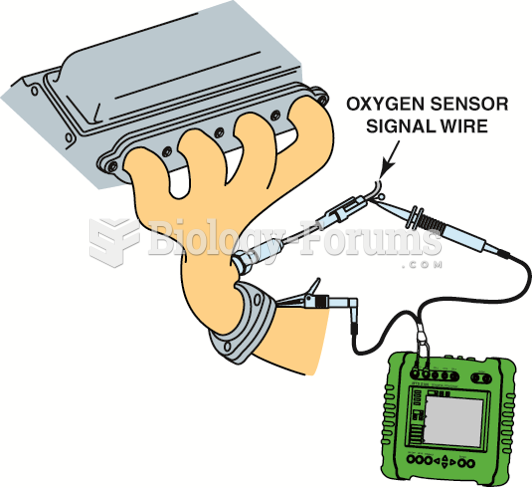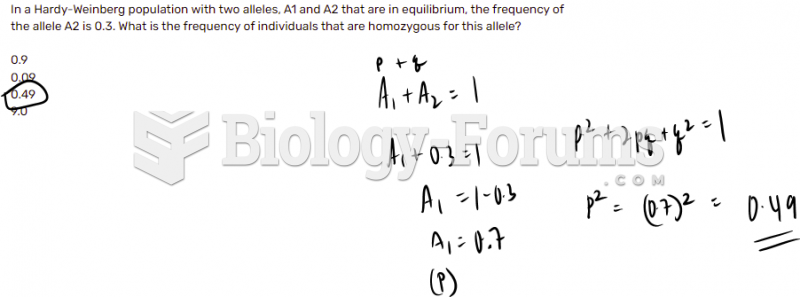|
|
|
Most childhood vaccines are 90–99% effective in preventing disease. Side effects are rarely serious.
Essential fatty acids have been shown to be effective against ulcers, asthma, dental cavities, and skin disorders such as acne.
Asthma-like symptoms were first recorded about 3,500 years ago in Egypt. The first manuscript specifically written about asthma was in the year 1190, describing a condition characterized by sudden breathlessness. The treatments listed in this manuscript include chicken soup, herbs, and sexual abstinence.
In ancient Rome, many of the richer people in the population had lead-induced gout. The reason for this is unclear. Lead poisoning has also been linked to madness.
Amoebae are the simplest type of protozoans, and are characterized by a feeding and dividing trophozoite stage that moves by temporary extensions called pseudopodia or false feet.
 The philosophical journey requires self-examination. Your responsibility as a critical thinker is to
The philosophical journey requires self-examination. Your responsibility as a critical thinker is to
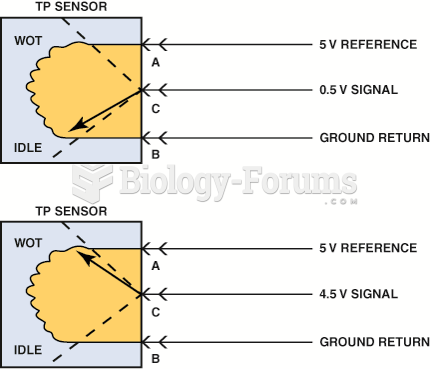 The signal voltage from a throttle position increases as the throttle is opened because the wiper ...
The signal voltage from a throttle position increases as the throttle is opened because the wiper ...


